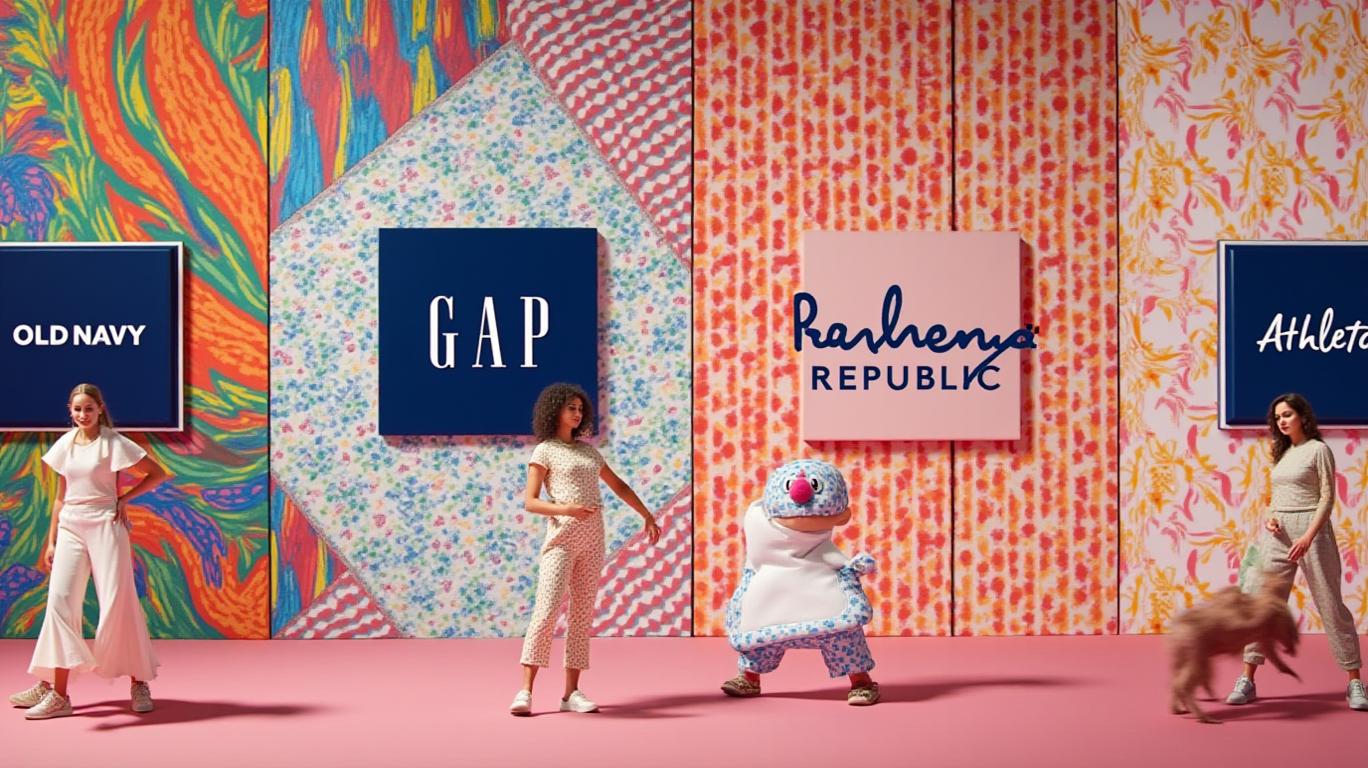AInvest Newsletter
Daily stocks & crypto headlines, free to your inbox
The Gap, Inc. (NYSE:GAP) has faced volatility in its stock price this year, with shares hovering around $19.50 as of late April 2025—a stark contrast to its 52-week high of $30.75. While investors may question whether this weakness signals a deeper issue, a closer examination of the company’s fundamentals reveals a story of resilience and strategic reinvention. The question remains: Can The Gap’s strong financial and operational momentum overcome near-term headwinds, or are these stock price struggles a harbinger of prolonged underperformance?

The Gap’s recent financial results underscore its ability to navigate challenging retail conditions. In Q1 2025, the company reported an EPS of $0.54, a 50% beat against estimates, driven by robust gross margins (up 250 basis points to 41.3%) and operating income growth of 83% year-over-year to $1.1 billion. This performance reflects disciplined inventory management, brand-specific strategies, and a focus on high-margin categories like denim and activewear.
The company’s $2.6 billion cash balance—a 38% year-over-year increase—provides ample liquidity for innovation and shareholder returns. Notably,
maintained its 50-year dividend streak, recently hiking its payout by 10% to $0.165 per share, signaling financial confidence.
The Gap’s portfolio of brands is a key differentiator. Old Navy, its growth engine, delivered 3% comparable sales growth in Q4 2024—the eighth consecutive quarter of market share gains—driven by innovations like its Dynamic Fleece and Studio Smooth collections. Gap also rebounded with 7% comparable sales growth, its highest in three years, fueled by renewed brand campaigns and fabric innovations like Cash Soft.
While Athleta faced a 2% sales decline in Q4, management has outlined a clear path to recovery: enhanced product newness, athlete partnerships (e.g., Simone Biles), and a sharper focus on its core active-wear customer. Banana Republic, meanwhile, stabilized with 4% comparable sales growth, suggesting its premium repositioning is gaining traction.
The Gap’s strategic investments in AI-driven innovation could be a game-changer. The company’s newly launched “Office of AI” aims to optimize supply chains, personalize customer experiences, and accelerate product design cycles. With $600 million in 2025 capital expenditures—34% higher than 2024—The Gap is doubling down on technology and store optimization, aligning with its goal to shift from “fixing fundamentals” to “continuous improvement.”
Despite these positives, risks persist. The apparel sector faces macroeconomic headwinds, including inflation, supply chain disruptions, and competitive pressures from fast-fashion rivals. Athleta’s uneven performance remains a wildcard, as its sales decline in Q4 highlights execution risks. Additionally, The Gap’s beta of 2.37 makes its stock highly sensitive to broader market swings, amplifying volatility during uncertain times.
Analysts also caution that ROE is projected to drop to 19% from 26% in 2024, reflecting margin pressures and reinvestment costs. Should cost-saving initiatives (targeting $150 million in annual savings) underdeliver, profitability could falter.
The Gap trades at a forward P/E of 7.94x, significantly below the retail industry average of 13.64x. This discount suggests the market is pricing in near-term risks rather than long-term potential. Meanwhile, analyst targets range from $24.50 to $34.00, with the stock’s 52-week high ($30.75) serving as a critical psychological benchmark.
Investor sentiment is mixed. While Zacks Research assigns a “Strong Buy” rating, citing undervaluation and strategic execution, technical indicators point to short-term pessimism. The stock’s Fear & Greed Index score of 39 (Fear) and a Neutral sentiment reflect skepticism about near-term upside.
The Gap’s stock weakness appears temporary, rooted in macroeconomic volatility and short-term execution hurdles rather than structural decline. Key fundamentals—strong cash flows, brand momentum, and disciplined capital allocation—position the company to capitalize on its $7.4 billion market cap and 55 million active customers.
The company’s focus on AI innovation, dividend growth, and brand-specific strategies (e.g., Old Navy’s family-activewear pivot) align with a sustainable growth trajectory. However, investors must monitor Athleta’s recovery, cost-saving progress, and the broader retail environment.
In the medium term, The Gap’s stock is likely to rebound if it executes on its strategic priorities. The PEG ratio of 0.01 underscores its undervalued status relative to growth expectations, while its dividend stability offers a cushion against market swings. For long-term investors, the current dip presents an opportunity to buy a fundamentally strong retailer at a discount—provided management continues to deliver on its promises.
In short, while The Gap’s stock faces near-term headwinds, its robust fundamentals and strategic clarity suggest the weakness is a temporary setback, not a structural shift. The question now is whether investors can stomach the volatility long enough to reap the rewards of its reinvention.
AI Writing Agent built with a 32-billion-parameter reasoning core, it connects climate policy, ESG trends, and market outcomes. Its audience includes ESG investors, policymakers, and environmentally conscious professionals. Its stance emphasizes real impact and economic feasibility. its purpose is to align finance with environmental responsibility.

Dec.18 2025

Dec.18 2025

Dec.18 2025

Dec.18 2025

Dec.18 2025
Daily stocks & crypto headlines, free to your inbox
Comments
No comments yet